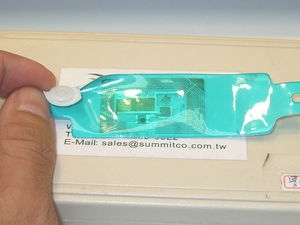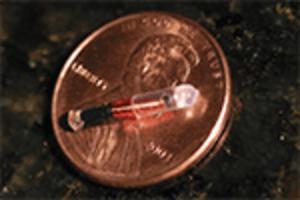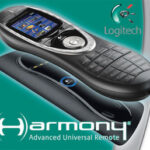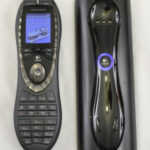Some have referred to it as your driver’s license on steroids. It is called an enhanced driver’s license, and it goes where angels fear to tread. Not only does it function as a driver’s license, but as a high-tech identity source, and proof of citizenship card. Radio chips are embedded, that provide an identity number or other information, which a remote unit can read, while the driver’s license is in a pocketbook or billfold. The chip is called Radio Frequency Identification (RFID), and it is used to broadcast a number, that provides biographical information (from a database) to the border patrol.
Presently, the enhanced driver’s license is voluntary, but there is reason to believe that it will eventually be part of a federal program for identification. And you thought that a National ID was scary? Christians opposed the National ID because it brought to mind the idea of “the mark of the beast.” Others feared its “Big Brother” connotations, and were also concerned with possible identity theft issues. Due to the concerns of citizens across the U.S., many governors also formally opposed it. But the new enhanced driver’s license will be much more intrusive than the proposed National ID.
Currently, the enhanced driver’s license can be used in place of a passport for land and sea crossings into Canada, Mexico, and the Caribbean Islands. Because of a need to tighten border security, the U.S. originally set a deadline of January 2008, for passports to be presented when crossing back over the border. In fact, according to WorldNetDaily.com (February 28, 2009) the U.S. State Department now requires “proof of identity and proof of U.S. citizenship when entering the United States from Canada, Mexico, Bermuda, and the countries of the Caribbean by land or seas.
Due to this requirement, the American passport system was totally overburdened with requests, resulting in the deadline being moved to January 2009. As an alternative, identification cards that verify citizenship were considered, and the concept of the enhanced driver’s license was implemented. Washington State became the first state to offer enhanced driver’s licenses. Currently, the Department of Homeland Security is working with other border states, such as Vermont, Michigan, California, New York, and possibly Texas to implement the new license program.
But not everyone is happy about the new high-tech licenses. When the California state legislature agreed to a plan, banning the use of radio chips in identification documents, Governor Arnold Schwarzenegger vetoed it, indicating he did not want to be a hindrance to any future federal programs, that might be implemented to identify people. (A lot can be gleaned from that statement.)
Michigan State Representative, Paul Opsommer, explained to identity chip expert and radio show hostess, Katherine Albrecht, that his state inquired about an exception to the future enhanced driver’s licenses, with the electronic identity device, and was told that was “unlikely.” In the WorldNetDaily.com article previously cited, he warned that this is just the first step toward more federal control. A driver’s license is a state document, but now is also likely be used to prove citizenship. His concerns are that the enhanced driver’s licenses will become the National IDs that many have feared. And who’s to say what the next step could be? An enhanced driver’s license could be required in the future to buy a gun, or fly on a plane. Or perhaps the government might use them as a way to pinpoint those who attend anti-government meetings, war protests, or other political gatherings. Big Brother concerns may indeed be valid. (And needing a chip to prove your identity is the thing Biblical nightmares are made of.)
In our present world, where identity theft is becoming rampant, there will likely be problems ensuring that the correct person is using the enhanced driver’s license. This is why some critics suggest that eventually the chip will have to be placed in the body, to provide an unmistakable identity. (Of course, even that isn’t foolproof, should a criminal decide to cut out the chip, and have it re-implanted in himself or someone else.)
There is great concern that the remote readers of the enhanced driver’s licenses could be used in ways they were not designed to be used, such as to track the movements of the card holder, for facial recognition, and for other confidential informational purposes. Citizens under surveillance could find themselves on government watch lists for attending certain functions, or information could be gathered randomly in a federal file. Passive RFID tags (the type that will be used in enhanced driver’s licenses) can only be read by a remote reader, while active RFID tags have an internal power source, that can transmit identification, location, and other details. But if the remote readers are used indiscriminately, and the enhanced driver’s licenses are not properly shielded, the readers can easily violate privacy rights. The Department of Homeland Security says that long range RFID tags can be read as far away as 30 feet. Others have estimated a possible 70 feet.
There are also concerns that state motor vehicle departments would have to confirm citizenship, which is a federal job. How will they verify birth certificates and documents from other countries, with only a few hours of training? Some of the submitted documents will likely not be genuine. The new enhanced driver’s licenses will also cost $15.00 to $20.00 more than the normal driver’s license.
The government has tried to reassure citizens that it is not seeking private, personal information, but they have also noted, that those with the enhanced driver’s license will need instructions on how to properly carry, use, and protect it. They also say that in order to prevent the license from being read remotely, a shielded container will be needed.
As you can see, there are valid concerns about the implementation of the new enhanced driver’s licenses, and it does appear that the United States is moving steadily and surely toward the nationwide use of these cards.
http://epic.org/privacy/surveillance/spotlight/0907/default.html
http://www.worldnetdaily.com/index.php?fa=PAGE.view&pageId;=90008
http://www.dhs.gov/xtrvlsec/crossingborders/gc_1197575704846.shtm
http://my.opera.com/richardinbellingham/blog/2008/10/25/aclu-reports-privacy-and-security-concerns-for-washington
http://www.atlanticfreepress.com/news/1/6065-driving-your-liberties-away-biometrics-and-enhanced-drivers-licenses-.html





